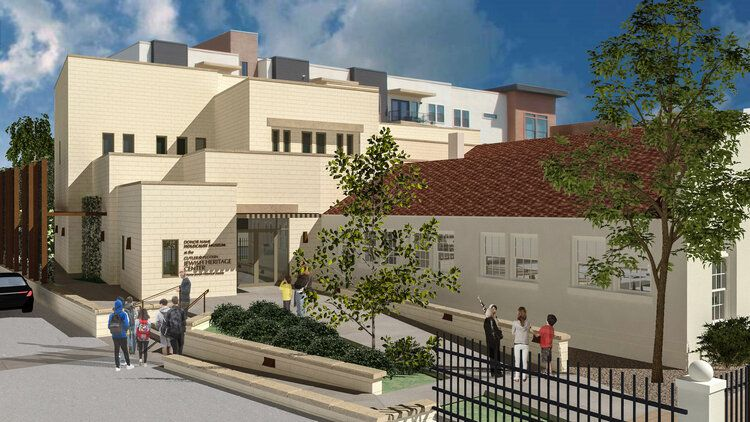The Arizona Jewish Historical Society (AZJHS) is seeking community support and donations for its Capital Campaign with a goal to build a Holocaust and tolerance education center to promote respect for all people regardless of their differences. The renovations and expansion of the existing Cutler Plotkin Jewish Heritage Center will include a new building featuring state-of-the-art technology and interactive features such as immersive media experiences.
The 17,000-square-foot project includes a new 6,778-square-foot space dedicated to teaching visitors about the Holocaust and other human rights abuses. The Holocaust gallery designed by world-renown museum designers, Gallagher and Associates, will focus on making an emotional connection to the events of the Holocaust. It will allow students and members of the public to learn directly from those who survived this horrific event, and to reflect on how we might apply them to our world today.
“We value the importance of Jewish history and its lessons on antisemitism and discrimination,” said Lawrence Bell, executive director of AZJHS. “In this time of rising racism, xenophobia and antisemitism, awareness of the Holocaust is more important than ever. We must show people where this hateful rhetoric will lead and help them to be more kind, compassionate and understanding of one another. We must learn from those who survived the Holocaust, so that these kinds of atrocities can never happen again.”
The new building will replace the current administration building and will feature special exhibit galleries, classrooms, a new entry way, lobby and connecting passages to existing historic sanctuary and adjacent gallery. The second floor will include administrative offices, a conference room and storage space. The basement will house archives, collections and conservation space, and potential future additional exhibition space.
There have been several donors who have been touched by the AZJHS’s efforts. Arizona residents are volunteering time and financial resources to help make the education center a reality. Tim and Susie Ernst are one such couple.
“My parents were both Holocaust survivors who were fortunate to have escaped at a young age,” Susie Ernst explained.
Her mother was 8 years old when her immediate family expedited plans and were able to leave Vienna in face of mounting antisemitic rhetoric, acts of hate and murder. Susie’s father was sent by his parents to live with an aunt and uncle in the United States. The rest of his family members were arrested and killed. Both Tim and Susie’s motivation to help establish the center is not only to honor the memories of those who perished, but also Righteous Gentiles who risked and often gave their lives to help those targeted by the hate and violence. A second motivation is to help educate the public as to not only the lessons of the Holocaust, but also of other crimes against humanity with the hope that all people regardless of religious, cultural or sexual preferences are treated with tolerance, respect and acceptance.
Howard Atlas says that he found out about the project by chance after seeing a television segment in the news, but his motivation to help comes from a deeper place. Atlas’s father came to the United States with his sister and mother in 1938. Prior to their escape, his grandfather left Hungary for the United States to get a head start to make money for when the rest of the family was able to leave. His grandmother had a feeling that things were going to get worse and borrowed just enough money take a ship to America with her two children. Just weeks later, Hungary’s borders closed.
Stu Siefer is a retired architect from Tempe. While volunteering his design services, he met local Holocaust artist Bob Sutz and Holocaust survivor Oskar Knoblauch. Sutz, who lost many family members in the Holocaust, spent the last 40 years making plaster life masks of Holocaust survivors and liberators and painting scenes of their horrific experiences in the death camps. Knoblauch spent many years visiting schools throughout Arizona to share his experiences living through the Holocaust and teaching young people the importance of standing up to hate and bigotry. Siefer was so inspired by the dedication and commitment of these two men that he decided to help pursue their dream of building a place in Phoenix where the lessons of the Holocaust and other crimes against humanity could be taught especially to young people.
The generous contributions that have been made to the Capital Campaign from donors so far has brought AZJHS over 50% to their goal to date.
With planned funding goals achieved, the expectation is that final space and technological plans, blueprints, construction drawings and city permits will be accomplished in 2023, city agencies’ approvals and ground breaking mid-2024, and grand opening in 2025.
To learn more about the Capital Campaign, visit The Project — Arizona Jewish Historical Society (azjhs.org).To donate to the campaign, visit Imagine a Community of Hope Campaign (ejoinme.org).



